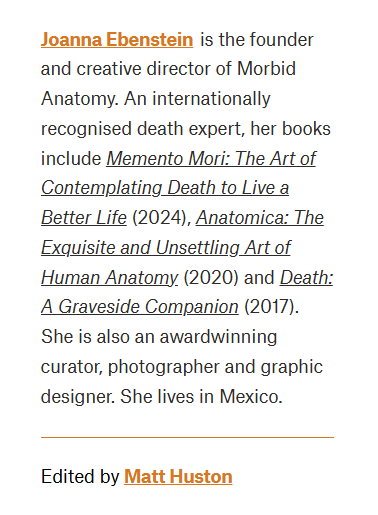Reflections on mortality can help you live well now - here's how [View all]
 For me and many others, contemplating death has clarified what matters. These curiosity-based exercises will get you started
https://psyche.co/ideas/reflections-on-mortality-can-help-you-live-well-now-heres-how
For me and many others, contemplating death has clarified what matters. These curiosity-based exercises will get you started
https://psyche.co/ideas/reflections-on-mortality-can-help-you-live-well-now-heres-how
 An ancient floor mosaic found in Antakya, Turkey. Loosely translated, the Greek text ‘Euphrosynos’ may mean ‘be cheerful, enjoy life’. Courtesy Antakya Archaeology Museum/Wikipedia
An ancient floor mosaic found in Antakya, Turkey. Loosely translated, the Greek text ‘Euphrosynos’ may mean ‘be cheerful, enjoy life’. Courtesy Antakya Archaeology Museum/Wikipedia

When I was an adolescent, I developed a profound fear of flying. But I also
really loved to travel. To overcome this impasse, I developed a sort of spontaneous ritual. As soon as I got myself situated on the plane – carry-on stowed, seat belt buckled – I would close my eyes and take a few deep breaths. Then I would ask myself a question: ‘If I were to die today on this flight, what would I regret?’ Unwittingly, and knowing nothing of the tradition, I had developed my own
memento mori.
 A Woman Divided into Two, Representing Life and Death. Courtesy the Wellcome Collection, London
A Woman Divided into Two, Representing Life and Death. Courtesy the Wellcome Collection, London
For millennia, and all over the world, people have actively cultivated a relationship with death as an important part of a life well lived. One way they have done so is through the use of
memento mori (Latin for ‘remember you must die’). These are practices, objects or artworks created expressly to remind people of their death as a means of encouraging them to live the life they truly want before it’s too late. By forging a relationship with death, many people have found that they were, paradoxically, able to live fuller and more meaningful lives.
Steve Jobs, the man behind Apple computers and the iPhone, made use of
memento mori in the crafting of a unique and impactful life. In a 2005 commencement speech – soon after he was diagnosed with a rare form of pancreatic cancer – Jobs shared that, since his teens, he would look in the mirror every morning and ask himself: ‘If today were the last day of my life, would I want to do what I am about to do today?’ If he found that the answer to that question was ‘No’ for too many days in a row, then he would make a change. He also told the young graduates:
What our ancestors knew so well – and Jobs and I both accidentally discovered – is that contemplating death is a powerful tool that, regardless of your beliefs about God or an afterlife, can transform your life. Its formidable lineage stretches back at least to Socrates, who asserted that the core of philosophy itself was a
memento mori-like contemplation of one’s mortality. In ancient Rome, it was common to encounter a skeleton mosaic on a tavern floor as an exhortation to ‘seize the day’ (
carpe diem); in other words, eat, drink and be merry, for tomorrow you might be dead. Christians used
memento mori as a reminder to resist earthly temptations and to be ready to meet (and be judged by) their maker.
Memento mori were also used by
some Buddhists, who would visit charnel grounds and meditate on decomposing corpses as a means of overcoming fear of death. Even today, one sometimes finds a human skeleton in a Buddhist meditation space.
snip
 Memento Mori, ‘To this Favour’ (1879) by William Michael Harnett. Courtesy the Cleveland Museum of Art
Memento Mori, ‘To this Favour’ (1879) by William Michael Harnett. Courtesy the Cleveland Museum of Art
 Detail from the mural Dream of a Sunday Afternoon in Alameda Park (1947) by Diego Rivera. Courtesy Adam Jones/Flickr
Detail from the mural Dream of a Sunday Afternoon in Alameda Park (1947) by Diego Rivera. Courtesy Adam Jones/Flickr






